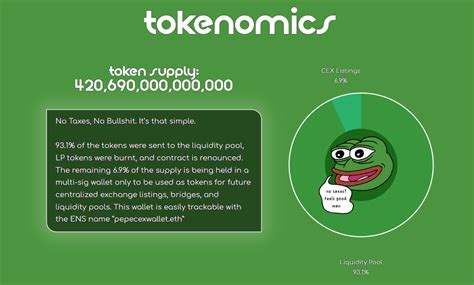AI-controlled approach to tokenomics: Efficiency and durability
As the world of Blockchain and the cryptocurrency continues to grow, one of the key aspects that has received significant attention is tokenomics. Tokenomics is the study of tokened funds, including cryptocurrencies, cuffs and other digital securities, economics and mechanics. In recent years, AI-controlled approaches have been increasingly used to improve efficiency and sustainability at different aspects of Tokenomia from administrative models to supply chain management.
What is tokenomics?
Tokenomics refers to research on how a particular property or sign is created, distributed and used in the ecosystem. It includes understanding the financial principles of the emergency, distribution and exploitation of the symbols and the relationship between the different stakeholders of the system. Tokenomia’s key aspects include:
- Creating Token : How to Put is given, including the mechanisms of creating them.
- Distribution : Who gets the tokens, how they are distributed, and all the terms or restrictions of their ownership.
- Usage Cases : What functions can be carried out and how they are used in the ecosystem.
The benefits of ai-controlled approaches to tokenomy
The use of AI-controlled approaches in Tokenomics offers several benefits:
- Increased efficiency : AI algorithms can automate tasks such as data analysis, optimization and decision-making, leading to faster and more accurate results.
- Improved durability : By utilizing machine learning techniques, Tokenomics models can better predict market development, identify potential questions and optimize the entire ecosystem for long-term durability.
- Improved transparency : AI-controlled approaches allow Token’s performance monitoring by providing stakeholders with information on their investments.
AI-controlled approach in Tokenomics
Several AI-controlled approaches apply to improve efficiency and durability in different areas of Tokenoma:
- Machine learning based Token creating models
: Using machine learning algorithms to predict the optimal ID distribution and creation process.
- Predictive analytics for supply chain management

: Applying statistical models to brand demand, supply and use to optimize the supply chain operations.
- Optimization of Administration Models : Using AI-controlled approaches to identify and mitigate any questions of administrative systems such as voting mechanics or ownership structures.
Examples of successful implementations
Several companies have successfully implemented AI-controlled Tokenomiikka approach:
- Chainlink Labs Automated Administrative System : Using Machine Learning Algorithms to create and automate administrative models for different defici platforms.
- Polygon Intelligent Contracts Optimization : Using predictive analytics to identify potential problems with the intelligent contract code, leading to improved efficiency and reduced costs.
Challenges and Restrictions
While AI-based approaches offer significant benefits, there are also challenges and restrictions to consider:
- Data Quality and Availability : Sufficient information is available to train machine learning models.
- Compatibility and compatibility : Ensuring seamless communication between different tokenomic systems and platforms requires careful planning and testing.
- Regulation Requirement : Tokenom approaches must comply with relevant regulatory requirements, such as anti-money laundering (AML) and emotional client (KYC).
conclusion
The use of AI-controlled approaches in tokenomics can revolutionize the field by increasing efficiency, improving durability and improving openness.
